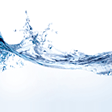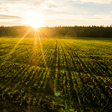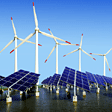- Home >
- Our Actions >
- Ambassador report
7
Comments
Urban Green Roofing |
|---|
|
by Christian Gonzalez | 08-05-2017 20:44
|
|
Many cities in the United States and other countries are currently facing increasing environmental and health challenges as their urban populations grow. As levels of human activities rise, carbon emissions tend to rise accordingly. With over 50% of the global population now residing in metropolitan areas, problems in cities such as the formation of urban heat islands and poor air quality will likely worsen continually if solutions are not contrived to resolve urban environmental issues. Fortunately, there are existing technologies that can be implemented that are able to decrease certain impacts of these problems. One such technology that is already being used today is green roofing. Green roofing is an urban planning technique used to cover the tops of buildings with vegetation. Although the use of natural turfs as roofs has been commonly adopted in Scandinavia for for centuries, the modern form of this method started being performed in mid-20th century Germany. Green roofs are first placed over a waterproof membrane to prevent water leakage into buildings. Most commonly, these roofs are made up of grass and other flora such as shrubs. However, vegetation of any variety may be used to roof a building. In certain cases, more complex designs are used to regulate the roof, including the addition of drainage and irrigation systems to aid in making an effective design that can function more efficiently. There are a number of reasons why green roofs may be used, ranging from the desire to increase the aesthetic appeal of a building to reducing the urban heat island effect by lowering city temperatures. Additionally, these roofs provide a habitat for animals to nest and live in without disruption and can even reduce heating costs of a building. Stormwater runoff is also decreased with the absorption of water by the turf, sometimes by over 75%. There are three separate categories that green roofs can be put into, depending on the extent to which maintenance of the system is necessary as well as the depth at which vegetation is planted. Intensive roofs involve high maintenance, with equally high costs that must be endured to reap its environmental benefits. Typically, these roofs are highly maintained and regulated in order to use the space as an area of public access in either the form of a garden or park. They also have the greatest vegetation depth. Green roofing involving medium maintenance is classified as semi-intensive, requiring maintenance but considerably less than an intensive roof available for public enjoyment. This variety is usually made up of small shrubs and turfs such as grass, and is used to support natural habitats and biodiversity. Lastly, extensive roofing requires little to no maintenance and has hardly any quantifiable cost that needs to be factored in beyond installation. Extensive green roofs are the simplest class of green roofs, but are also the most limited in their use as they most frequently only support the growth of certain plants such as mosses and grass. Granted, green roofing does have drawbacks that can make the process seem unattractive for urban planners and city officials to implement the method. Notably, the installation costs of green roofs are quite higher than that of constructing a roof from solely traditional construction materials. Some estimates have determined that installing a green roof is twice as expensive as is completing a regular roof. Maintenance does also require financial investment for many types of green roofs, but there are certain designs that have been made which involve no maintenance whatsoever. Maintenance by itself is also a disadvantage of the approach, even overlooking the costs that must be taken into account while doing so. Still, with new designs being invented and self-regulating systems as a possibility for the future, green roofing does still hold merit that makes it an effective way to improve heat islands and other anthropogenic challenges. All in all, green roofing still allows for the reduction of city temperatures, air pollution, and provides economic benefits after installment as well. The use of environmental technologies such as this in cities needs to be researched and developed further before yielding significant positive results for our planet. However, it is possible that green roofing might be implemented in large cities regularly as our global population increases. In order to abate health and climate problems that stem from urban activity, cost-effective systems that can be integrated with cityscapes, including green roofing, should be used more often to make our towns cleaner and more environmentally friendly. References National Geographic Scientific American The New York Times Journal of Environmental Quality European Federation of Green Roof AssociationsAerial view of a semi-extensive green roof on top of Chicago City Hall (Credit: Creative Commons)
|
|
|
|
|










 Previous : SEABIN PROJECT FOR CLEANER OCE...
Previous : SEABIN PROJECT FOR CLEANER OCE...









7 Comments
thanks for sharing
Posted 06-02-2018 22:06
good report
Posted 06-02-2018 22:06
Thanks Christian for your elaborate report on Green Roofs. Green Roofs are great as urban heat sinks and provide a visual relief, bring down the temperature, as well as purify the air in cities.
As I had mentioned in one of my previous reports (http://tunza.eco-generation.org/ambassadorReportView.jsp?viewID=42778), my grandfather has a green roof for his residential building in India. Not only is it a beautiful and healthy place for him to relax, but it also provides an insulation for the top floor thus cutting the cooling cost. The only problem being faced is that of water seepage on the upper floor of the building due to minor failure in the water proofing of the concrete slab under the garden.
Posted 14-05-2017 04:32
Thanks for the information on Green Roofing. It might be expensive to maintain but in the long run its sustainable benefits for the environment will compensate for that.
Posted 09-05-2017 23:43
Hi Christian! Thanks for sharing intersting report on green roofing. I've never knew that there are categories of green roofing:)
As you mentioned, there are many advantages of green roofing which can compensate its cost.
What I've heard is that this can hurt the building by eroding the outside. I wonder how people are solving this problem! Thanks for sharing agian!
Posted 09-05-2017 13:07
Thanks for the detailed report. Green roofs are planted for a wide variety of reasons and with different goals in mind. Green roofs provide a number of psychological and physiological health benefits and well as promoting environmental sustainability. They are not only good for aesthetic pleasure, water absorption and storm water management, but green roofs also provide increased insulation, climate cooling and sound/energy reduction.All of these factors promote sustainability and environmental friendliness, protecting the earth for future generations.
Posted 09-05-2017 03:38
Christian, thank you for your report. I always wondered about Green Roofing and this report is highly informative. What good it brings, how it works, three kinds of it, and so on. I got tons of information here. I think it would be worth writing more on this subject if you wish. Maybe introducing the first green roofing or the most famous green roofing would be interesting.
Posted 09-05-2017 00:29